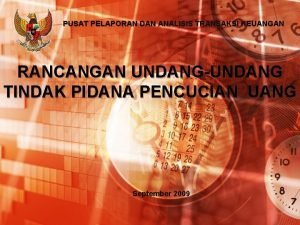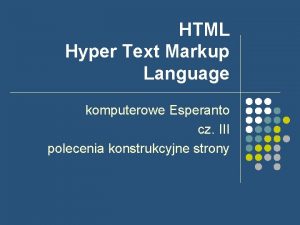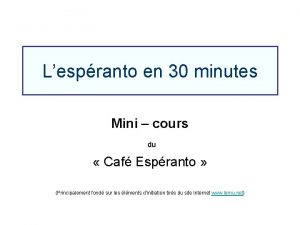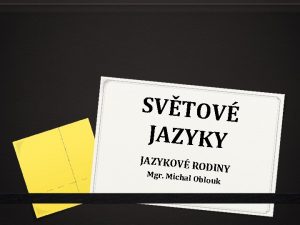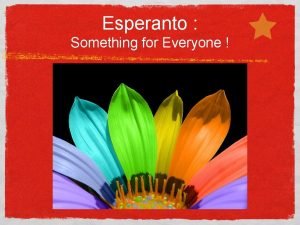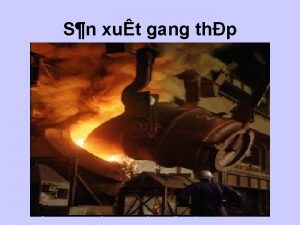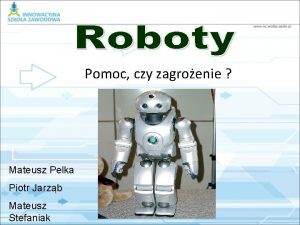Esperanto Mateusz Mierzyski 1 THP Esperanto the most







- Slides: 7

Esperanto Mateusz Mierzyński 1 THP

Esperanto - the most widely distributed international auxiliary language in the world Its name comes from the nickname "Dr. Esperanto ”(Doctor Hoping), under which Ludwik Zamenhof published in 1887 the basics of the language in the book International Language. Foreword and a complete manual. Its aim was to create a neutral and easy-to-learn language, useful for international communication, but not a substitute for other national languages.

Music in Esperanto Music performed in Esperanto covers a variety of genres such as folk songs, rock, cabaret songs, solo and choral works, and opera. Active performers include the Swedish band La Perdita Generacio, the Occitan singer Jo. Mo, the Finnish band Dolchamar, the Kazakh duo Ĵomart kaj Nataŝa, the Frisian group Kajto and the Polish bard Georgo Handzlik. Also, some famous composers and artists, such as Elvis Costello and Michael Jackson, recorded in Esperanto, composed pieces inspired by this language, or used it in their promotional materials.

Esperanto grammar The rules governing Esperanto. It was included in 1887 in 16 rules contained in the Fundamento de Esperanto, which remain unchanged, according to the recommendation of Ludwik Zamenhof. It is built on the basis of Indo. European languages, mainly Romance [1]. The grammatical rules of a language are built according to the following principle: "if a language uses a certain simple grammatical structure, it proves its correctness and it becomes a possible candidate for a planned language" [2]. The grammar of Esperanto is characterized by simple rules, no exceptions (all forms are regular), and an extensive system of word formation.

Classification Esperanto is an artificial language and is therefore not genealogically related to any ethnic language. They can be described as a language with an eminently Latin and Germanic vocabulary. From the point of view of morphology, it is a mostly agglutinating language with a slight analytical tendency [71]. Phonology, grammar, lexis and semantics are essentially based on Indo-European languages from Europe. Pragmatic and other aspects were not defined in Zamenhof's original writings

Religion During the First World Congress of Esperanto (1905), Fr. Peltier prepared a Mass in Esperanto, and during the Second World Congress of Esperanto in Geneva in 1906, he delivered the first ever sermon in Esperanto. Since 1990, Esperanto has been officially included in the liturgical languages of the Catholic Church. The Bible is also translated into Esperanto, and the Old Testament is the first literary work to be published in Esperanto with a translation by Ludwik Zamenhof himself. In Poland, the first Esperanto mass was celebrated by Bishop Jan Maria Michał Sitek, the head of the Old Catholic Mariavite Church.

Alphabet The Esperanto alphabet consists of 28 characters Eo a b c ĉ d e f g ĝ h ĥ i j ĵ k l m n o p r s ŝ t u ŭvz


